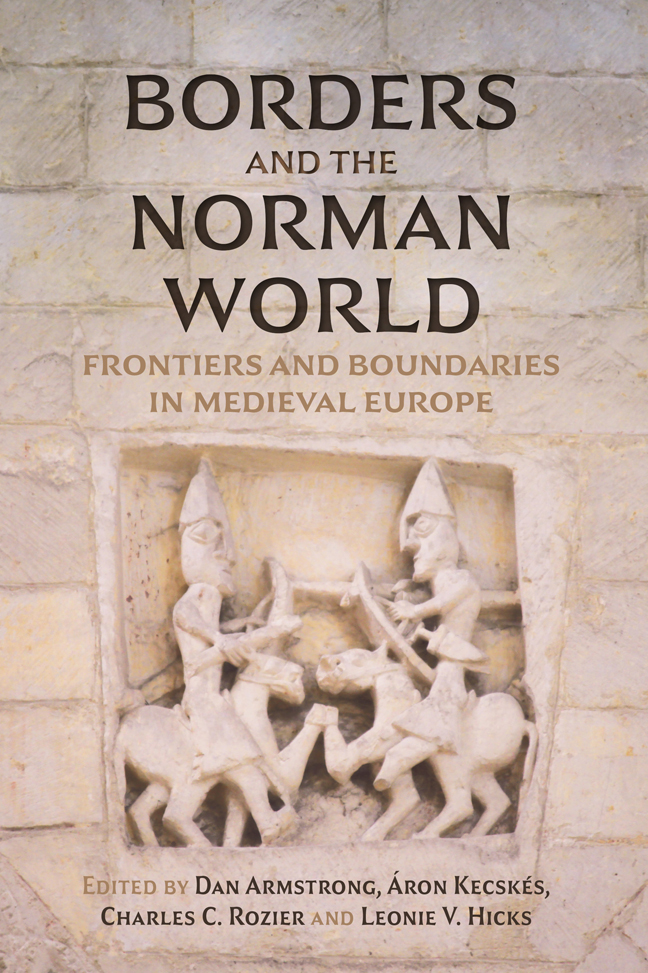Book contents
- Frontmatter
- Contents
- List of Illustrations
- List of Contributors
- Acknowledgements
- List of Abbreviations
- Naming Conventions
- Maps
- Introduction: Writing the Borders of the Norman World
- Part I Borders in and Around the Norman World
- Part II Ecclesiastical Borders
- Part III Conceptual Boundaries
- Afterword: Borders, Landscapes, and Seascapes
- Select Bibliography
- Index
11 - Norman Borders in the Work of William of Jumièges and Orderic Vitalis, c. 1057–1141
Published online by Cambridge University Press: 22 February 2024
- Frontmatter
- Contents
- List of Illustrations
- List of Contributors
- Acknowledgements
- List of Abbreviations
- Naming Conventions
- Maps
- Introduction: Writing the Borders of the Norman World
- Part I Borders in and Around the Norman World
- Part II Ecclesiastical Borders
- Part III Conceptual Boundaries
- Afterword: Borders, Landscapes, and Seascapes
- Select Bibliography
- Index
Summary
People Living In Eleventh- and twelfth-century Normandy (and elsewhere) negotiated many borders. There were various political, ecclesiastical, and administrative borders, the limits of which could sometimes be drawn on the ground but which might also comprise the intangible, but no less real, line between the responsibilities of one official and those of another. There were borders between free and unfree, laymen and clergymen (as well as the secular and spiritual spheres more broadly), the men of one lord and those of another, the various religious orders, laws, languages, and peoples. There was even a permeable border between the living and the dead. Some of these borders were relatively fixed. Some, including the political ones, were considerably more fluid – or at least appear so to us. Moreover, those borders necessarily impacted people even more than insensible land. To misquote Daniel Power, the concept of a regnum was more than territorial, signifying not only a ‘realm’ but also ‘rulership’, whether the domination of a people or the exercise of a bundle of rights that a king or prince exercised by virtue of his position. And that means that our sources often show us borders by reference to the creation and maintenance of relationships (for example, through fidelity or homage) in addition to naming places and delineating regions.
Historians have examined the nature of the political borders of the Middle Ages in general, as well as those of Normandy in particular, and have debated at length whether they should be seen as lines or zones – often on the basis of different assumptions and definitions. These wider debates will only be touched on briefly here, although it should perhaps be noted that so far as this essay is concerned, a border is a linear boundary and a frontier or march is a wider zone behind that line. Instead, this chapter will explore how two Norman writers, William of Jumièges and (necessarily more selectively) Orderic Vitalis, saw, or at least used, political borders – principally but not exclusively the border of the Duchy of Normandy – in their narratives. This exercise does not necessarily make the nature of the Norman border any clearer, but it does provide insights into what those borders meant for contemporaries.
- Type
- Chapter
- Information
- Borders and the Norman WorldFrontiers and Boundaries in Medieval Europe, pp. 273 - 300Publisher: Boydell & BrewerPrint publication year: 2023



